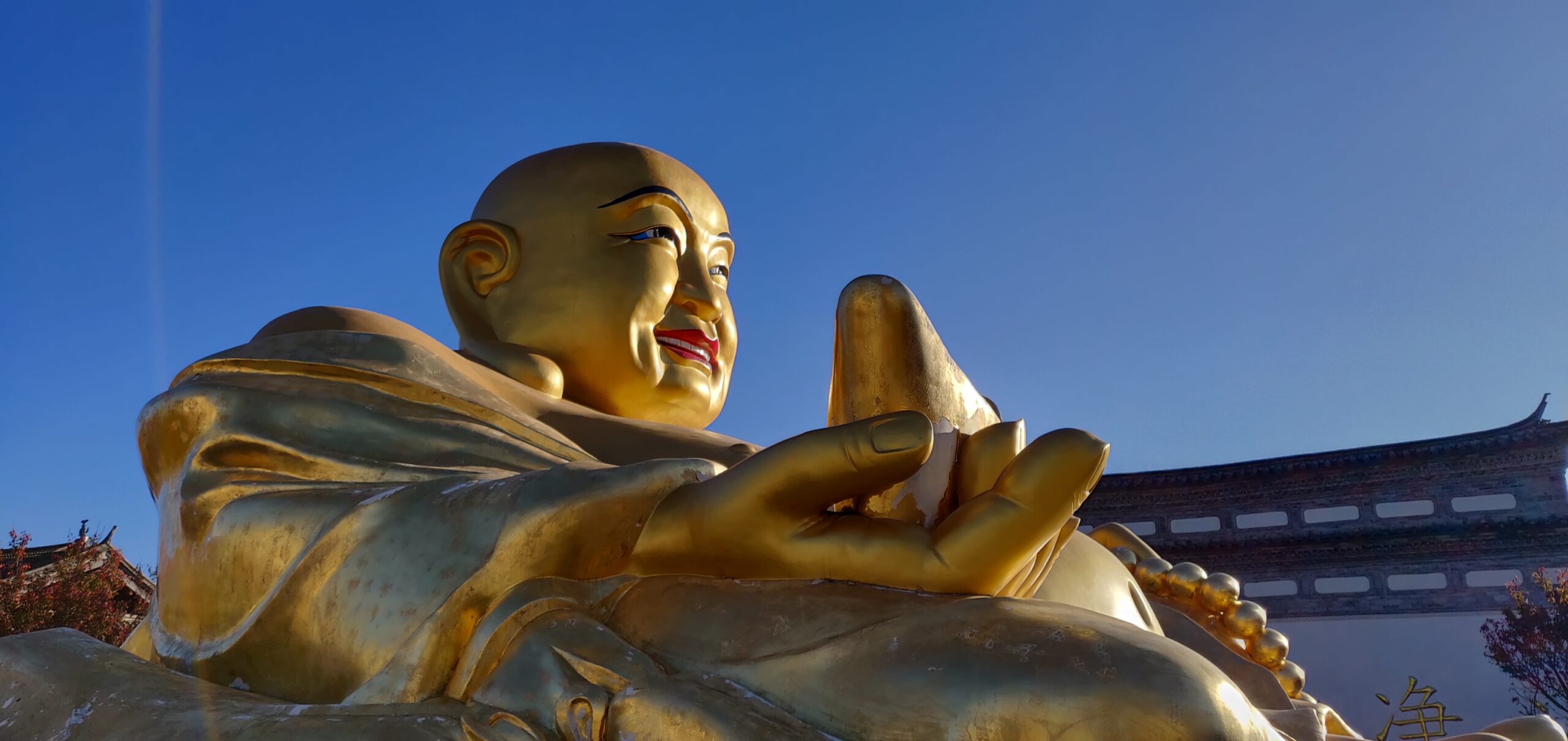If you’re planning your trip, you’ve probably asked yourself this question: When is the best time to go to China?
There’s a part of the country for every season. Depending on your climate and experience preferences, you can choose to go north or south, visit the interior or the coast. Mountains and rivers, desert, snow, or science-fiction cities. Choosing the right time to travel to each area is essential for an unforgettable trip.
Furthermore, being such a large country, it allows you to combine great contrasts in a single trip. You can travel in the middle of winter and enjoy the snow in the north, while also spending a few weeks on the beach in the subtropical south, just three or four hours away by plane. The richness and variety available just a flight away within the same country is indescribable.
Most people planning to visit China primarily think about eastern China, with its large and monumental cities like Nanjing, Suzhou, Beijing, and Shanghai. These destinations, while not the most distant from each other, have very different climates due to their latitude.
Furthermore, due to China’s vast expanse, you may find that at one latitude you have a subtropical climate, while in the east, near the Himalayas, temperatures can reach below zero due to the altitude above sea level. So, if you’re planning to take long trips across the country by train or plane, we recommend planning your clothing carefully.
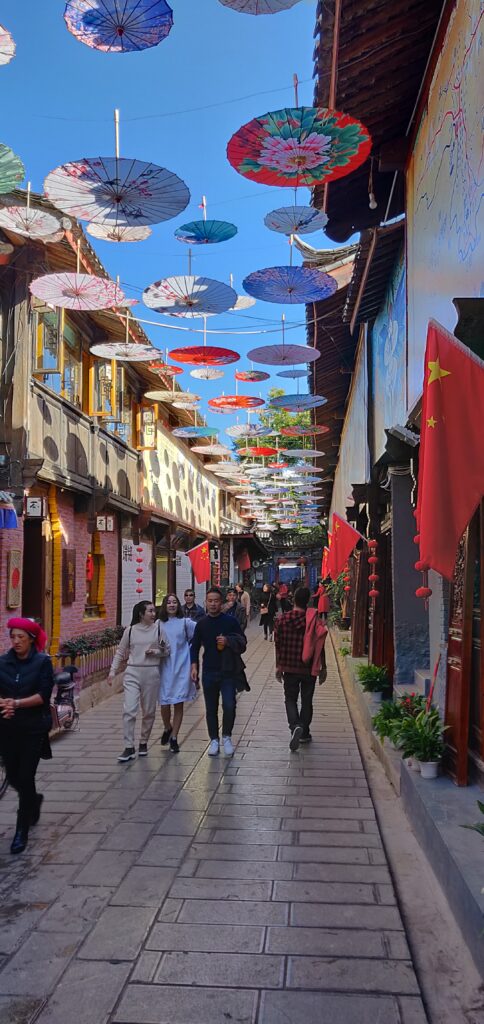
Lijiang, Yunnan
China
Chongqing
China

Let’s get down to business: What are you most interested in doing in China?
- Looking to take a culinary trip? You can go practically any time of year. We just recommend avoiding the two-week Chinese New Year holiday, as some restaurants are understaffed and service quality may suffer. Check this year’s Chinese New Year dates in advance; follow the lunar calendar, as it changes every time.
- Do you want to visit dream cities? We recommend avoiding the central summer months due to the rains, which can be intense on certain days. If you can still only travel in the summer, don’t worry. With a little preparation and our help, you can enjoy your sightseeing without worry.
- Do you want to visit natural landscapes? Spring and autumn are the ideal seasons to explore national parks and temples surrounded by nature. You’ll enjoy endless colors and contrasts.
- Are you interested in technology, robots, and electric vehicles? Any time of year is a good time to explore the country. China is currently one of the most advanced countries in terms of technology and digital services.
- Are you looking for better prices and fewer tourists? The last week of December and the first two weeks of January are a perfect time to explore the country at a leisurely pace.
So when is the best time to travel to China?
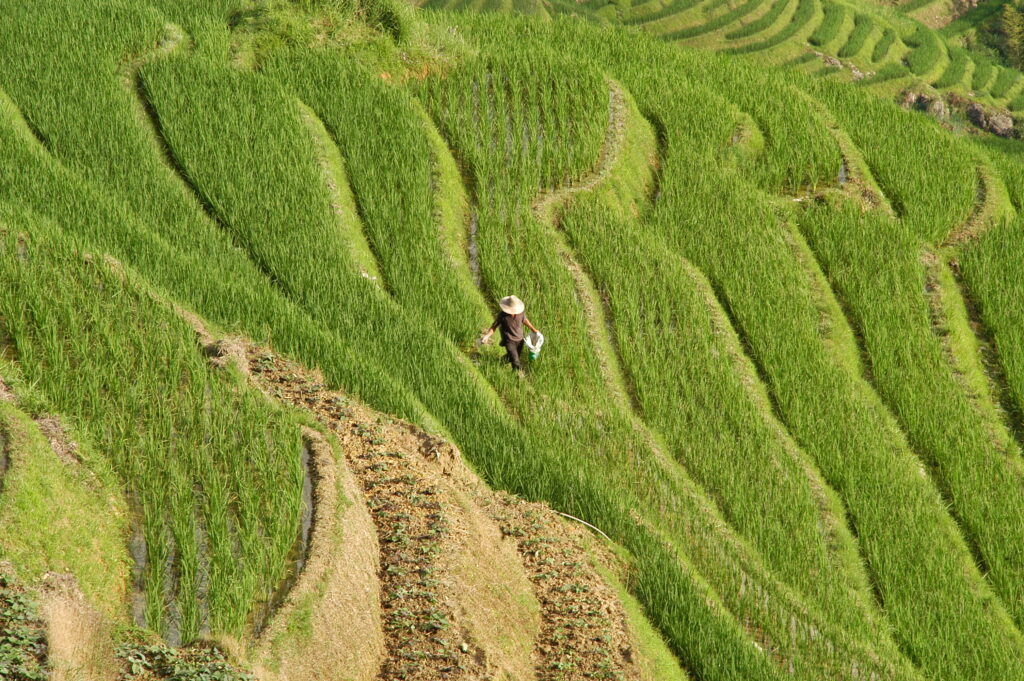
1. Spring season in China
Spring is the best time to visit China. China has countless parks and botanical gardens, as well as temples surrounded by nature that burst into color when the trees bloom in spring.
The numerous green areas are in full bloom in spring and burst into color for the enjoyment of residents and tourists in every city. Places like Fragrant Hill in Beijing are overwhelming with such a density of flowers and exotic plants.
Hanami in China
Did you know that you can also enjoy cherry blossoms in China as well as in Japan? Hanami, as this phenomenon is known in Japan, is also widely celebrated throughout the country, as the cherry tree (Prunus serrulata) is endemic to southern and eastern China.
Visiting gardens to enjoy cherry blossoms is a widely celebrated activity in China. Also, around this time, between March and April, there are shows, cultural displays, and street food markets.
Cherry blossoms symbolize renewal, hope, and the fleeting nature of life, connecting deeply with Chinese philosophical themes.
Spring is the perfect time to appreciate the natural wonders that China has to offer during your visit.
Did you know it’s always spring in China?
A little-known secret is that you can enjoy spring weather if you travel to China in winter. How so? Travel to the south of the country and you’ll be amazed by its green, flowery parks.
With mild temperatures year-round, the beautiful city of Kunming is known in China as the City of Eternal Spring. And if you want a little more warmth, you can even head down to Xixhuangbanna and spend the whole day in shorts.
Other cities like Shenzhen and Hong Kong offer pleasant temperatures during the winter, making it easy to enjoy a terrace and eat outdoors.
China in April
April is a great month to travel to China. It coincides with many Western holidays, making it the month of choice for many travelers. There are more daylight hours and the temperature is warmer in colder areas, so you can enjoy long walks outdoors during the day.
While March and April can be somewhat windy due to northeasterly air currents, this doesn’t stop you from enjoying the country.
China in May
Along with September and early October, the best time to visit northern and central China (roughly as far as Shanghai) is probably the best time. The climate is moderate, and street vendors for outdoor dining abound.
The weather is great for exploring Chinese cities by bike.
If you plan to travel far south to Guangzhou, Shenzhen, or Hong Kong, you should know that it will be somewhat hot during the central hours of the day.
China in June
If you plan to travel to China in June, you can wear short sleeves in much of the country, and you still have some time until the rainy season, which generally starts well into July.
Always remember to bring some warm clothing and check local conditions when visiting high-altitude areas or northern cities like Urumqi or Harbin.
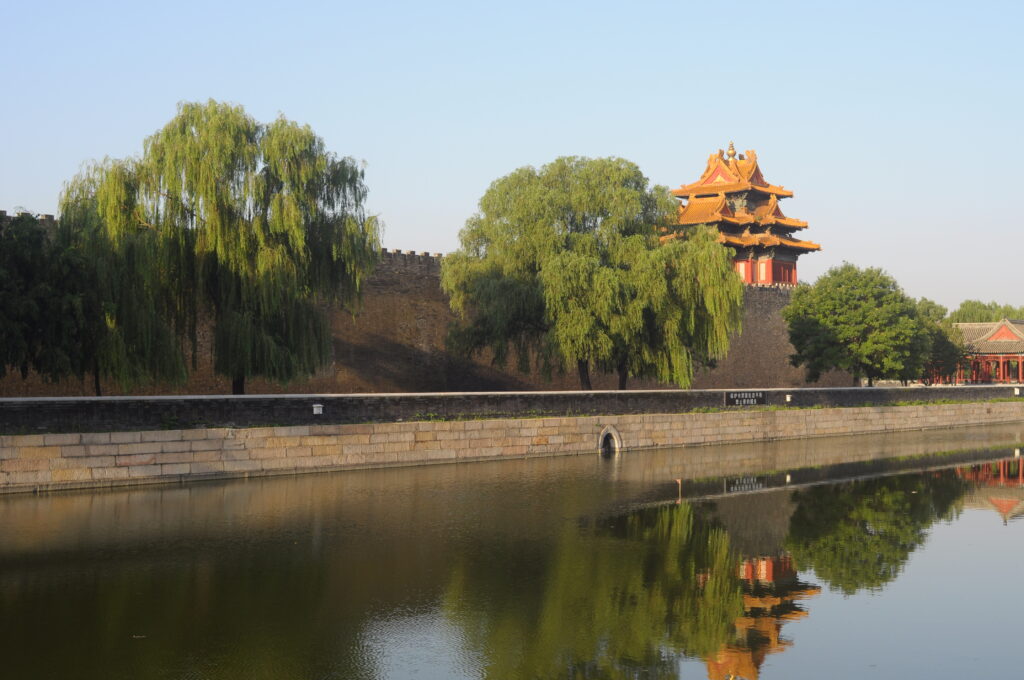
2. Summer in China
Visiting China in the summer is quite common. The hours of sunshine and Western vacation habits make this time a popular time for travelers looking to explore the country.
What is China like in July and August?
My first trip to China was during this time, and I have wonderful memories. The experience was sensational, but it does require some tolerance for the mix of heat and humidity if you’re visiting the southern half of the country.
Nothing prevents you from having a fantastic experience if you take care of the basic details:
Wear breathable clothing and shoes.
Remember to drink enough water, as the ambient conditions increase your body’s sweating.
Combine outdoor visits with breaks in air-conditioned indoor establishments like cafes, shopping malls, and museums. This way, you can also dry your clothes a bit while you rest.
Blend in with the locals and use an umbrella or parasol to always walk in the shade.
At night, it usually cools down and is very bearable. A fantastic thing about summer is enjoying the long evenings dining outdoors at low tables with a good Tsingtao beer to cool off. Around the lakes and parks, there are often plenty of establishments where you can enjoy the cool breeze as the sun sets. It’s an unforgettable experience.
China in September
September invites travelers looking for fewer Western tourists and still hoping for warm weather. It’s a perfect option if you also want to avoid the typical Chinese domestic tourism in October, which can be overwhelming for some travelers.

3. Autumn in China
Autumn is ideal for visiting China. Just like spring, virtually the entire country enjoys a moderate climate, and you can travel to faraway places without carrying too much luggage. With a generally dry climate and pleasant temperatures, autumn is the perfect time to explore China.
The colors of autumn invite you to visit natural inland destinations such as national parks, sacred mountains, and landscaped gardens.
The autumn dew tea harvest takes place between September 7th and October 8th, making this season the ideal time to taste fresh Oolong teas, known in China for their aroma.
There is a saying in China: “Drink spring tea for its texture, and drink autumn tea for its fragrance.”
During this time, we recommend trying Tie Guan Yin tea (pronounced “tie guan yin”). A medium-oxidized tea, brownish-green in color, light and aromatic on the palate.
China in October
Two important Chinese holidays take place in October: the Mid-Autumn Festival, also known as the Moon Festival, which is celebrated on the 15th day of the eighth month in the Chinese calendar, and China’s National Day, which takes place on October 1st.
During the Mid-Autumn Festival, it’s customary to light paper lanterns and eat mooncakes. Mooncakes are a delicious sweet treat traditionally shared at family and friends gatherings.
Resembling a slightly golden marzipan on the outside, they are filled with various ingredients, the most traditional being lotus seed paste and egg yolk. They are also easily found filled with sweet soybean paste and various fruit and seed pastes.
Just don’t expect the intensity of sweetness typical in the West. In China, delicate and smooth sweets are appreciated, allowing you to appreciate the nuances of different aromas. It’s definitely a unique experience, and we recommend you try them during your visit.
China in November and December
November and December, along with January, are the perfect months to visit China if you want to avoid the international tourist rush. With better prices and less crowded attractions, visits are very manageable.
You’ll have good weather and can still enjoy the late autumn colors. The weather is mild with cool nights, and it’s still comfortable to visit parks and mountains.
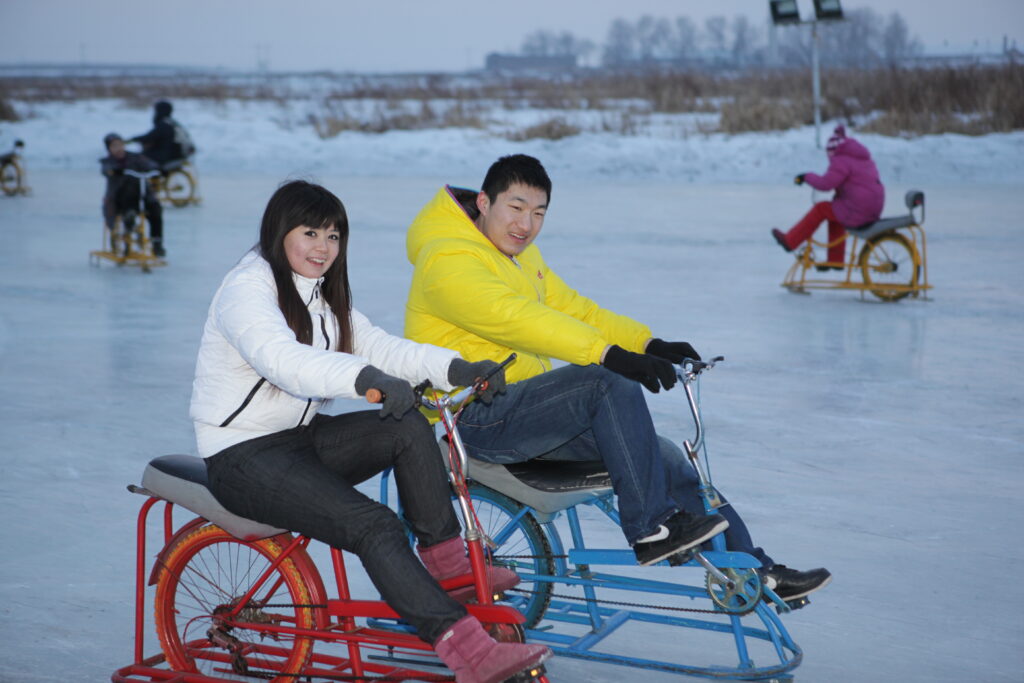
Winter in China
Winter in China offers very special visits to places full of ice, snow, and color. Contrary to what one might think, winter offers many activities and experiences for Western tourists.
The Forbidden City, the Great Wall, and the Summer Palace take on a special beauty when covered in snow. With fewer tourists than during peak season, you can enjoy these historical monuments more peacefully. Don’t miss skating on Beijing’s frozen lakes or enjoying a traditional hotpot to warm up.
If you’re looking for adventure, a must-see in winter is Harbin. Located in the northern province of Helijiang, it offers visitors temperatures as low as -30°C and hosts the famous Ice Sculpture Festival every year.
If you’re looking for a milder climate, all of southern China offers incredible spring-like weather during the winter. Combining northern and southern China in a single visit is an unforgettable travel experience due to its contrasts, and you’ll feel like your trip was worth a visit.
Let’s start with the cold and what northern China offers travelers in winter.
From December to the end of March, you can enjoy the cold and snow in the northernmost part of the country.
Frozen Lakes and Rivers for Skating
Between late January and mid-February, Beijing’s many lakes and canals freeze so thickly that it’s possible to walk on them. At Houhai Lake, surrounded by cafes, bars, and restaurants, you’ll find skaters and recreational chairs for rent so you can enjoy the frozen lake.
You’ll find recreational areas where you can skate virtually every northern city.
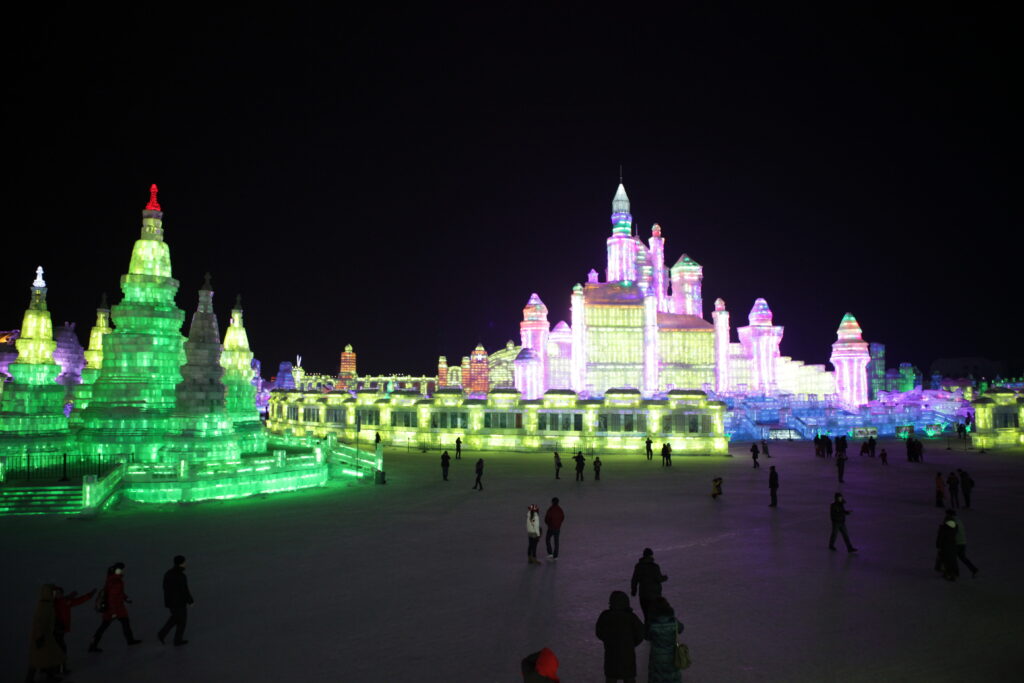
Harbin Ice City
Harbin Ice City is simply breathtaking. Located in the far north of China, very close to the Russian border, is the city of Harbin. Every winter, the Songhua River freezes over, providing tons of crystalline ice to create a fleeting fantasy world.
The Ice City is a visitable complex of enormous palaces, pagodas, and replicas of world-famous monuments, all meticulously sculpted from transparent blocks of ice.
Each of the buildings comes to life at night thanks to thousands of colorful LED lights, transforming the landscape into a beautiful, unique kaleidoscope.
The buildings, some of which are several stories high, can be visited inside, and you can even slide down some of the slides inside them.
Inside the Ice City, you’ll find food stalls and restaurants with cafes where you can rest and warm up.
Christmas in China
Christmas in China is a fascinating blend of Western influences and local customs. Although it’s not a holiday celebrated in China, as only 3 to 4% of the population is Christian, it’s present and visible everywhere you go. Especially in large cities, where businesses and shopping centers use typical Western-style Christmas decorations. Traditional Christmas songs play in the background, and a different atmosphere hangs in the air. It’s in cities with greater Western influence, such as Shanghai and Hong Kong, where Christmas is most present. Young locals take advantage of the opportunity to stroll, see the decorations, and eat with friends during this special time.
Generally, it’s a time of year with few foreign tourists. You can walk around and access attractions without waiting in lines.
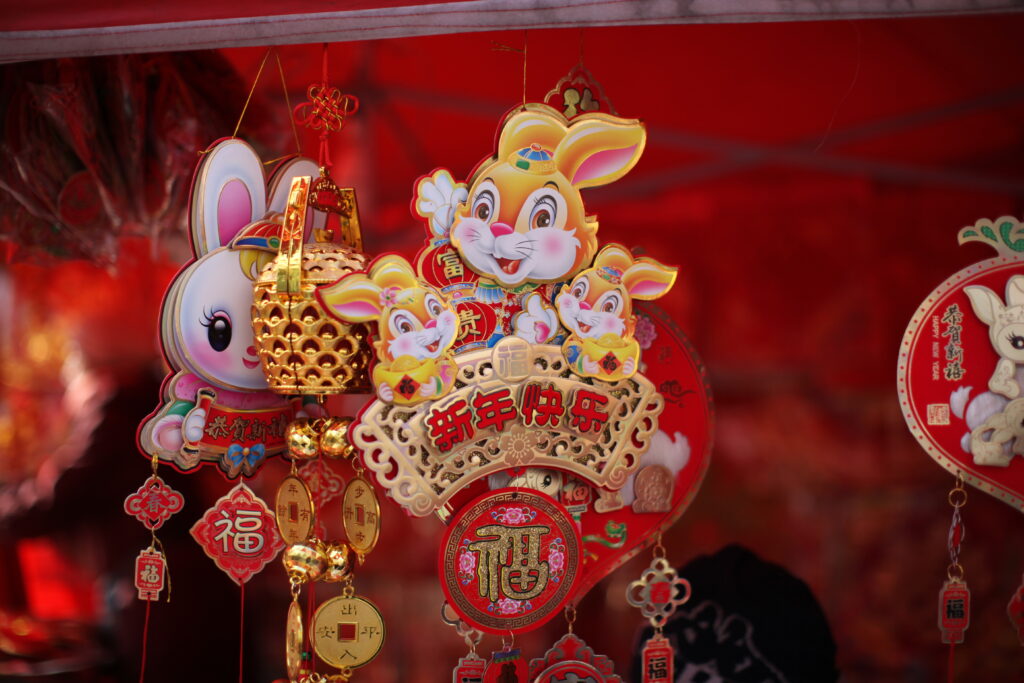
Chinese New Year
Chinese New Year, also known as the Spring Festival, is the country’s largest celebration, both in length and importance. Everyone reunites with their families, and the entire country comes to a standstill to celebrate the arrival of the new year.
Because its date is based on the lunar calendar, it changes days each year. It generally occurs between late January and mid-February. It is a festive period of approximately two weeks during which the entire country celebrates the new year and the animal of the Chinese zodiac sign to which the new year corresponds.
In 12-year cycles, each year a real or mythological animal is celebrated, such as the mouse, the snake, or the beloved dragon.
This period is full of impressive decorations, fireworks unlike any other in the rest of the world, and breathtaking drone shows.
If you wish to visit the country at this time of year, we recommend booking your flights, trains, and hotels well in advance, as the local population migrates to their hometowns massively.
Visiting China during the Spring Festival can be a very enriching experience and a glimpse into the most significant time of the year for Chinese culture.
Skiing and Snowboarding in China
China has numerous destinations for these sports, and often the facilities are new due to their recent boom as a hobby. Near Beijing, about an hour away, there are several destinations with excellent facilities, such as Nanshan or Wanlong. A little further away, we recommend Erlongshan or Yabuli, the country’s largest ski resort, both in Heilongjiang province, for their quality and variety of slopes.
China in January and February
January and February are the low season for Western tourism in China. However, you may encounter Asian tourists traveling during their Chinese New Year holidays, as there are abundant communities of Chinese origin in other countries such as Malaysia, Japan, Korea, and the Philippines.
These are interesting months to visit northern China if you like the cold and snow. And they’re perfect for heading south if you’re looking for spring-like temperatures, outdoor life, and good weather.
Avoiding the peak weeks of the Spring Festival will get you better prices on hotels and transportation.
Best Time to Travel to China Based on the Climate
China’s diverse climate and size offer a wide variety of experiences and places for every season. You can expect warm winters and cool summers. In general, if you’re looking for temperate climates and better weather, try to travel in spring or autumn.
Keep in mind that spring can be somewhat windy in the northeastern part of the country (known as Dongbei, literally “northeast”) due to winds from Mongolia. Due to the proximity of the Gobi Desert, there may be occasional bouts of haze and dust cloud cover.

Best Time to Travel to China Depending on Your Destination
Since China is a country with considerable geographical diversity, the best time to visit may vary depending on your destination. Are you looking to visit karst and verdant landscapes? Are you drawn to Venice-style canal cities? Are you seeking the cultural richness of the inland ethnic groups?
If you plan to visit widely separated areas (along the north-south axis), we recommend visiting China in spring or autumn, when the climate is moderate across much of the country. If you’re traveling north and aren’t particularly interested in snow, we recommend avoiding winter altogether.
If you’re visiting only southern and southeastern China, we recommend avoiding summer due to the humid heat and abundant rainfall.
As in the rest of Asia, typhoons are relatively common in summer. Especially in what is known as the “belly of China” area, which corresponds to the curve formed by the country’s eastern coastline roughly between Shanghai and Shenzhen. Typhoons are generally not dangerous in China; cities are well-equipped to withstand them, but they can ruin a day or two of your visit if one coincides with your stay.
By the way, didn’t you know that the word “typhoon” comes from the Chinese word “Táifēng” (台風)? It literally means “Great Wind” or “Strong Wind.”
Frequently Asked Questions About Traveling to China
When is low season in China?
If you want a budget-friendly and relaxing trip to China, we recommend traveling from November to early March. Always check the Chinese New Year dates beforehand to avoid those two weeks, which tend to be busier due to domestic travel by Chinese people to visit relatives.
When is high season in China?
Here, we must differentiate between the high season for international visitors and the high season for Chinese travelers, as the latter represent a high percentage of tourism.
International tourists generally prefer the months of May to September. During these months, you won’t have any problems traveling due to the wide range of transportation and accommodation options, but you can expect slightly higher prices and the occasional line to buy a ticket at a museum. Fortunately, the lines are always fast; in China, everything is planned in a big way and they are very efficient at this.
Local tourists travel on local holidays, such as the Mid-Autumn Festival, which falls roughly between September and October, depending on the year; the Spring Festival or Chinese New Year, which usually falls between late January and mid-February, depending on the year; and during “Golden Week,” which is between October 1 and 7.
Other busy holidays include International Labor Day, which falls on May 1; the National Holiday, which falls on October 1; and All Souls’ Day, known in China as Pure Brightness Day or Tomb-Sweeping Day, which can fall on April 4, 5, or 6, depending on the year.
During these dates, you can expect train stations and airports to be quite busy, as well as the major attractions you visit.
You can easily find the exact dates of each of these holidays by searching the year and name online.
Is it very hot in the summer?
Summer in China begins in June and lasts until the end of August, with temperatures between 25 and 33 degrees Celsius and generally high humidity.
Conclusion: When to Travel to China?
In short, you can travel at any time of year if you wish. The variety of climates and experiences to choose from allows you to do so. Plus, everything is so well connected by rail and air that it’s easy to get from one place to another if you want to hop a few steps.
We recommend first planning your itinerary based on your interests and then checking the weather conditions and possible holidays in case you prefer other types of experiences. Tell us your preferences, and we’ll advise you on the best time to visit each region.
Regardless of when you travel to China, it will undoubtedly be an unforgettable experience.
Still thinking about it? Here are some of the experiences you can enjoy in China:
- Picking tea on a farm outside Hangzhou
- Join a ceramics workshop in Jingdezhen, the birthplace of porcelain
- Learn to cook Chinese food in Beijing or Shanghai
- Sliding down an ice slide in Harbin City
